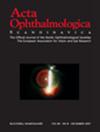Cataract surgery in megalocornea: A qualitative and quantitative evaluation of published literature
Abstract
Megalocornea is a rare condition characterized by an enlarged anterior chamber and an extended ciliary ring, often accompanied by early cataracts and zonular anomalies. This systematic review evaluates the outcomes of cataract surgery in patients with megalocornea, focusing on surgical techniques, intraocular lens (IOL) implantation, complications, and visual outcomes. A comprehensive literature search was conducted using PubMed, Google Scholar, and Scopus. Data regarding the included eyes, including preoperative best-corrected visual acuity (BCVA), primary surgery, sequential intraocular lens (IOL) implantation, type of implant, IOL formulae used, follow-up, final BCVA, reported complications, additional surgeries, and IOL-related drawbacks, were collected. A total of 30 studies involving 66 eyes meeting the inclusion criteria were identified. The most common surgical approaches were phacoemulsification (62.1%) and extracapsular cataract extraction (33.3%). IOL displacement occurred in 25% of cases, and further surgery was required in 21.5%. Overall, patients experienced significant improvement in visual acuity, with an average best-corrected visual acuity (BCVA) improvement of −1.05 logMAR. Individuals with megalocornea present unique challenges when undergoing cataract surgery, particularly the risk of IOL displacement due to zonular weakness and capsular enlargement. Despite these risks, appropriate IOL selection and surgical techniques can lead to favourable visual outcomes.

 求助内容:
求助内容: 应助结果提醒方式:
应助结果提醒方式:


